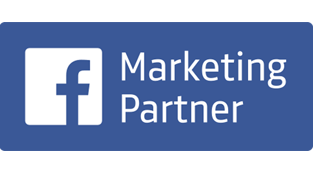Traditional vs. Digital Promotion: Navigating the Marketing Crossroads
Digital technology has changed marketing, making businesses compare traditional and digital promotion methods. To improve marketing ROI, businesses must understand the different strategies and how they relate to each other in this changing story. This comprehensive analysis delves deep into these realms, providing insights that will guide decision-making processes.

Understanding Traditional Promotion
Traditional promotion includes established channels used for decades, before the internet changed how we share information.
Reach and Tangibility
One of the hallmarks of traditional marketing is its physical aspect. Whether it’s a billboard, a leaflet, or a print ad, the audience can physically interact with the message. This tangible nature often leads to increased recall value, making it a powerful tool for local businesses targeting a nearby demographic.
Trust and Reliability
People have come to trust newspapers, TV, and radio over time and perceive them as reliable sources of information. Many people, especially older ones, rely on these channels for information and trust them a lot.
However, traditional promotion isn’t without its drawbacks. Businesses may have limitations in their marketing strategies. The absence of real-time analytics, limited audience segmentation, and higher costs can cause these limitations.
The Digital Promotion Revolution
Digital promotion , on the other hand, leverages the internet’s ubiquity to convey promotional messaging. This medium includes social media marketing, search engine optimization (SEO), pay-per-click advertising (PPC), email marketing, and more.
Precision and Personalization
One area where digital promotion shines is its ability to target specific demographics with precision. Digital platforms allow for detailed audience segmentation — from basic demographics to behavior patterns and preferences. This data-driven approach enables brands to craft personalized marketing messages, enhancing engagement and conversion rates.
Analytics and Adaptability
Digital promotion stands out for its use of real-time analytics. Businesses can track a campaign’s performance down to minute details, allowing for real-time adjustments and optimization. This level of adaptability is unparalleled in traditional promotion strategies.
Cost-Effectiveness and ROI
Digital promotion is a cheaper choice for budgeting, especially for small and medium-sized businesses. With the potential for a global reach and lower entry costs compared to traditional media, digital platforms offer a competitive ROI.
Digital promotion has advantages and disadvantages. One of its strengths is its ability to reach a wide audience.
However, it also faces challenges such as algorithm changes, which can affect the effectiveness of promotional efforts. Additionally, data privacy concerns have become a major issue in digital promotion. Another challenge is the need for constant content innovation to stay ahead of competition and overcome market saturation.
Synergy Over Supremacy
The question remains: Which is the superior choice? The answer isn’t straightforward. Instead of viewing it as a competition, businesses should explore how these methods can complement each other.
Integrated Marketing Communications (IMC)
Using IMC ensures consistent brand messaging across all platforms, creating a unified and seamless experience for the audience. This strategy leverages the strengths of both traditional and digital methods, covering a broad spectrum of touchpoints.
Balancing Act
A business can use TV or print ads to make people aware of their brand in a community or group. They can then use social media, email marketing, or SEO to strengthen that message. This balance ensures that they are reaching customers at multiple points in their journey, maximizing opportunities for conversion.
Conclusion: Navigating the Crossroads
In conclusion, the traditional vs. digital promotion debate isn’t about replacing one with the other. The digital age continues to push boundaries, but the foundational principles of traditional marketing remain valid. To effectively promote something, it is important to utilize the strengths of both online and offline platforms. You should do this in accordance with the specific needs of the business and the market.
In a world where change is constant, businesses must remain adaptable, sometimes blending tradition and innovation. Are you at a crossroads in deciding the best promotional strategy for your business? It might be time to seek expert advice.
Unsure where to start?
Apply for your FREE Discovery Call with seasoned professionals to guide you through crafting a holistic and effective promotional strategy. Elevate your business by making informed decisions that blend the best of both worlds.



